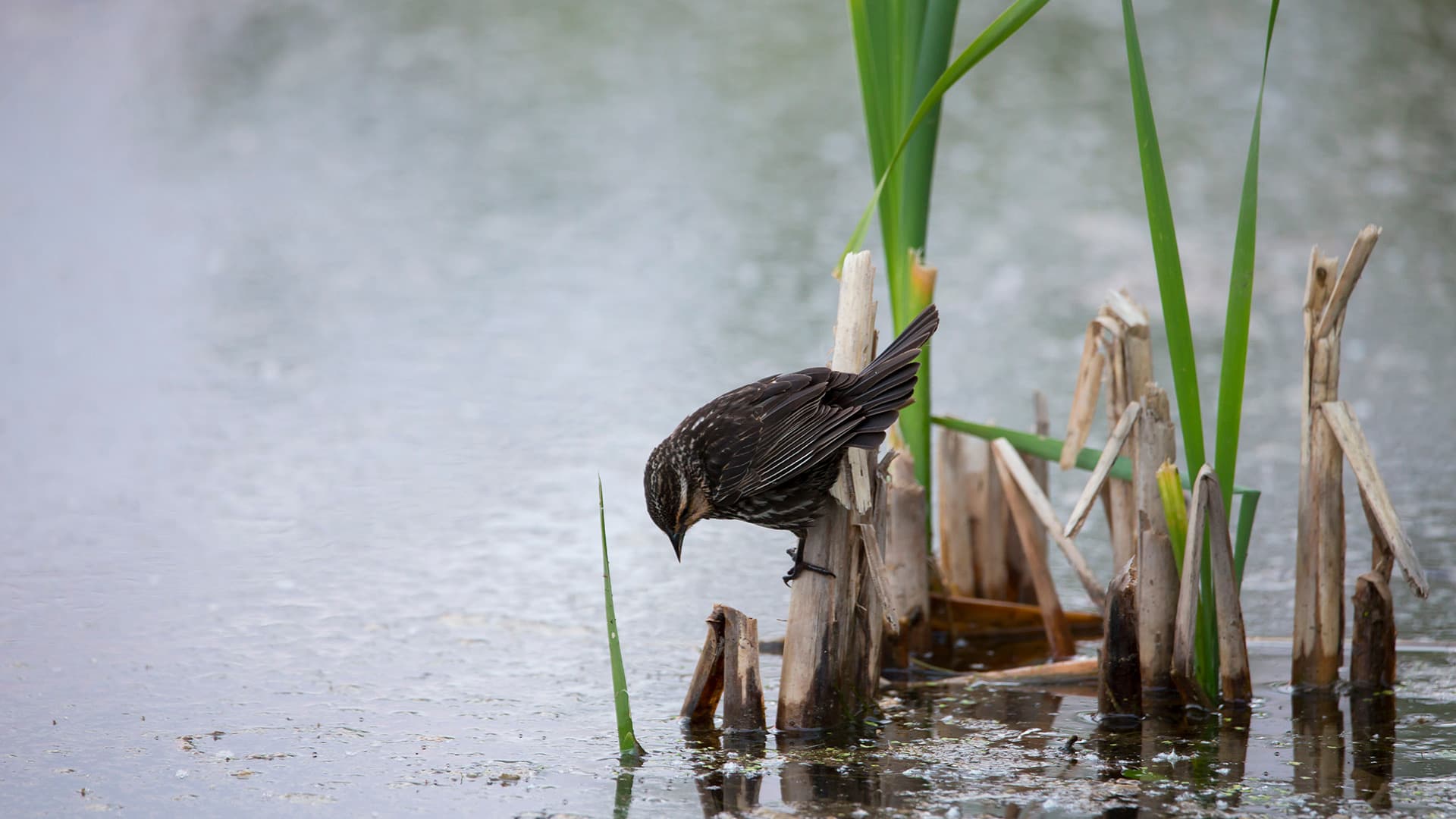Riding Out the Storm … But Not Climate Change
Study Looks at Coastal Birds’ Resilience to Hurricanes

Photo by Shutterstock
A team led by a SESYNC researcher studied the effects of hurricanes on coastal birds, finding that populations recovered quickly.
How can birds that weigh less than a AA battery survive the immense power of Atlantic hurricanes? A new study in Ecology Letters finds that these coastal birds survive because their populations can absorb impacts and recover quickly from hurricanes—even storms many times larger than anything previously observed.
“Coastal birds are often held up as symbols of vulnerability to hurricanes and oil spills, but many populations can be quite resilient to big disturbances,” said lead author Christopher Field, a postdoctoral fellow at the University of Maryland’s National Socio-Environmental Synthesis Center (SESYNC). “The impacts of hurricanes, in terms of populations rather than individual birds, tend to be surprisingly small compared to the other threats that are causing these species to decline.”
Field and colleagues from five other universities studied the resilience of four species of coastal birds, including the endangered saltmarsh sparrow. The researchers developed simulations that allowed them to explore how disturbances like hurricanes would affect the birds’ populations over time.
They started with models that project population sizes into the future based on the species’ birth and death rates. The research team then subjected these populations to simulated hurricanes that killed a certain number of birds. Because they were using computational simulations, the researchers were able to look at the full range of potential hurricane sizes—from storms that caused no bird deaths to events more severe than anything ever observed in the real world.
The researchers found that the four coastal species were able to absorb the impacts of storms across a wide range in severity. For example, the study found that a storm could wipe out a third of saltmarsh sparrows and clapper rails in one year, and their populations would still be unlikely to deviate significantly from their trajectories over time.
Field and colleagues also analyzed the risk that these species could face from storms that are strengthening because of climate change. The research team looked not only at the ability of populations to absorb impacts, but also the birds’ ability to recover over time after large disturbances. Saltmarsh sparrows and clapper rails are declining, largely from increased coastal flooding caused by higher sea levels. The researchers found that populations were often able to recover from large storms within 20 years, even when populations continued to decline from other threats, such as regular flooding.
Thus, coastal birds’ resilience to hurricanes does not necessarily translate to climate change.
“It’s tempting to focus on dramatic events like hurricanes, especially as they get stronger from climate change,” Field said. “But less visible threats like sea-level rise and increased coastal flooding are here to stay, and they are they are going to continue to drive coastal birds, like saltmarsh sparrows, toward extinction.”
The research holds lessons for human society as well, said Chris Elphick, a study co-author from the University of Connecticut.
“After a big event like a hurricane, we often rush to rebuild and improve coastal resilience without thinking as much as we perhaps should about the longer-term chronic changes in the system,” he said. “Obviously, we need to respond to the damage done, but addressing the gradual, less noticeable changes may be just as important to coastal communities in the long run.”